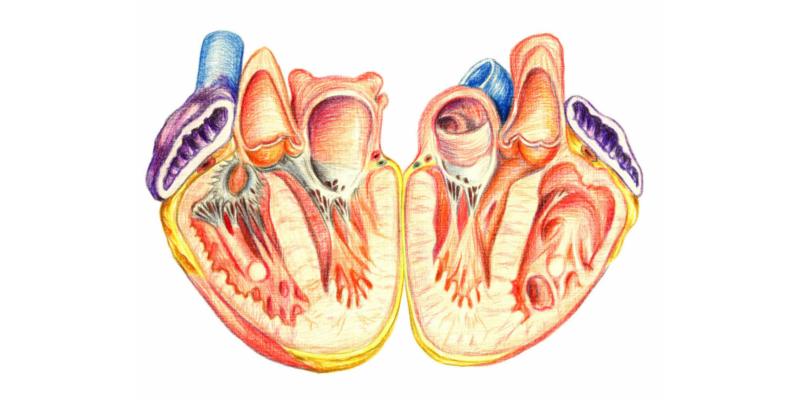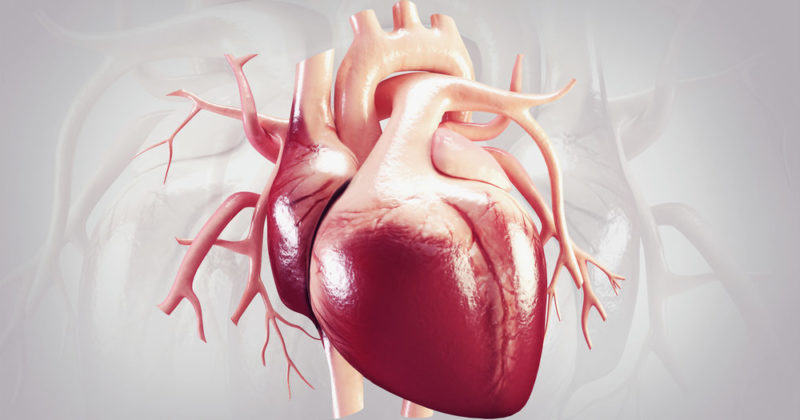We explain what the heart is and what the various functions of this organ are. In addition, its characteristics and how is its structure.
What is the Heart?
The heart is one of the main organs of the body whose operation guarantees the life of the person. It is considered the main organ of the circulatory system . Its main function is to supply blood to each of the body's organs.
The heart is located in the thoracic cavity, it is a hollow-type muscle and pyramidal in shape . It can weigh approximately 270 grams in an adult human being and its size is similar to that of a clenched fist.
This organ is divided into 4 parts : two upper parts called atria and two lower parts called ventricles.
The pumping movement by which blood enters and egress is called: systole and diastole.
Heart location
It is located between the lungs in the center of the thorax and has a slight inclination towards the left side of the human body .
Main function of the heart

The heart supplies oxygen and nutrients to cells throughout the body . In order to fulfill this great function, it must beat more than 100,000 times a day.
Chambers of the heart
The heart is divided into 4 chambers: two upper ones called atria and two lower ones called ventricles . The atria are responsible for receiving the blood that comes from the organs throughout the body while the ventricles send the blood to the rest of the body. In terms of power, the left ventricle is the one with the greatest amount of force.
Heart valves
The heart also has valves that prevent blood from going back or taking the wrong path (back) to the heart.
Pericardium, myocardium and endocardium

The heart is covered by a bag called the pericardium that fulfills the function of protecting the heart . The outer layer of the pericardium is called the serous pericardium, while the inner layer (which protects valves and chambers) is called the endocardium.
In the center of the heart between the pericardium and the endocardium is the myocardium, muscular tissue with a striated appearance .
Coronary arteries
The heart needs blood to work, but the blood that passes through it and is pumped around the body travels too fast. For this reason, the heart needs specific arteries, called coronary arteries.
Sinus node
Inside the right atrium is what is known as the pacemaker of the heart. Its function is to stabilize the heartbeat . This node tells the heart when to speed up the pumping (as a result of a run or when playing sports ) or to slow down while the body is at rest or sleeping.
Blood flow with little oxygen flow
Each half of the heart works as an independent pump. The right half is responsible for the return of oxygen-deprived blood that will travel to the lungs and then be eliminated from the body.
These cavities receive blood from the vena cava. Blood then passes from the left atrium through the valve to the left ventricle and out of the heart through the pulmonary artery.
Path of the blood with a high flow of oxygen

The blood with the highest amount of oxygen reaches the left atrium through the pulmonary veins . The passage of blood from the left atrium to the left ventricle is regulated through the valves.
It is important to mention that the walls of the left ventricle are 3 times larger than the right ventricle. This is because it has to push the blood with greater energy so that it leaves the heart full of oxygen and reaches all the organs of the body.
Heart capacity

As explained above, the heart has the main function of pumping oxygen and nutrients to the organs of the body. The upper chambers (atria) have a capacity of 50 ml of blood . The lower chambers (ventricles) have a slightly higher capacity: 60 ml of blood.
The heart as a whole can pump up to 7,000 ml of blood per day.
The above content published at Collaborative Research Group is for informational and educational purposes only and has been developed by referring reliable sources and recommendations from technology experts. We do not have any contact with official entities nor do we intend to replace the information that they emit.
Veronica is a culture reporter at Collaborative Research Group, where she writes about food, fitness, weird stuff on the internet, and, well, just about anything else. She has also covered technology news and has a penchant for smartphone stories. .
Leave a reply
Your email address will not be published. Required fields are marked *Recent post

Sport: What Is It, Types, Risks, Features, Characteristics and Examples

Dogs: Emergence, Features, Characteristics, Feeding and Breeds

Story: Definition, Elements, Structure, Features and Characteristics

